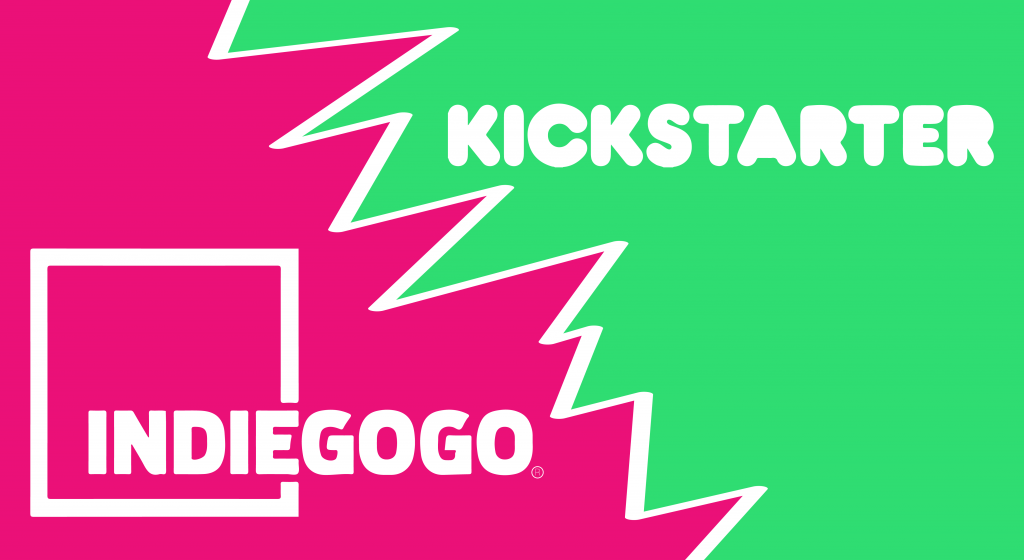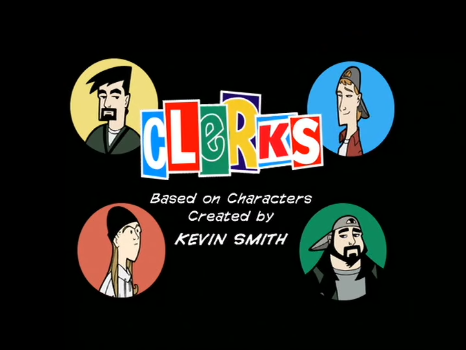[Exclusive Interview] Skinner and Ross Kennedy on Creating Apocalyptic Stop-Motion Magic in “Shrine of Abominations”
It’s been a groundbreaking decade for animation, especially when it comes to niche properties that skew towards specific sects of fandom. Dark and mature animated feature films and movies that cater towards adults have become increasingly in vogue, but there’s also been a greater push towards practical effects and stop-motion spectacles that hearkens back to retro masterpieces. Ross Kennedy, a prolific monster sculptor, alongside Skinner, a visionary artist, have crafted something extremely special that will delight stop-motion and dark fantasy fans alike. Shrine of Abominations is a psychedelic stop-motion attack on the senses that recently met its Kickstarter goal and is set to unleash its madness on eager animation fans. Ross Kennedy and Skinner get candid on the six-year-long journey to bring Shrine of Abominations to life, the stop-motion project’s surprising evolution, the sequence that stop-motion savant Phil Tippett helped direct, and what the future holds for a larger Shrine of Abominations stop-motion cinematic universe.
Daniel Kurland: Audiences are extremely excited over the glimpses that they’ve seen of Shrine of Abominations, but are there any details that you can give about the story and the film’s narrative focus?
Skinner: The narrative focus of the film is essentially you’re visiting this world, and this world has antagonists and protagonists in it. A lot of them are malevolent and have ideas of domination through occult means, while others are–not unlike us as people–stumbling through the world and trying to navigate trauma, uncertainty, and chaos. Instead of them being humans, they’re demons, beasts, wizards, and creatures. I think the characters become a lot more relatable as they go through some personal transformations and some struggles. Also, it’s just the best kind of action that we always wanted to see in stop-motion, but with monsters and creatures. The first chapter, which we’ll be finishing soon, there’s an evil wizard, a council of wizards, and a curious and confused character called Morgog who meets them.
Daniel Kurland: Dialogue can often be tricky in stop-motion projects and there are plenty of films that function more like visual tone poems than heavy narratives, like Phil Tippett’s recent Mad God. What approach does Shrines of Abominations take? Is it more of a mood or is it a dialogue-heavy story?
Skinner: What we kind of decided is that if we don’t need dialogue to explain the situation then let’s not put it in there. There’s something compelling about anticipating what’s happening rather than being told it all the time. There will be some dialogue, but it may not be through traditional means. It will still be a little more direct than Mad God, which felt a little like a nightmare collage.
Ross Kennedy: There will be a little bit of narration–at least at the beginning–as kind of an intro that helps set things up. That narration may come back later on. We’re not sure yet…
Skinner: I’m thinking it might though… As we construct this in a very non-traditional sense there’s a lot of room left for things to reveal themselves. That’s kind of what independent filmmaking has given us the space to do. Sometimes we spend a lot of time building something, only to take a step back and wonder if all of that is really necessary. Does it diminish the mystery to some extent? It takes some time for us to marinate on the creative decisions that we make.
Daniel Kurland: You’ve both been working on Shrine of Abominations for over six years. Can you talk a little about that journey and how the project has gradually evolved over time from its short film roots?
Ross Kennedy: I’ve thought of this project as a pilot, to some extent. Whether it turns out to be that kind of thing or not, we’ll see. That’s how I’ve been thinking about it though. It’s this big bang that starts off the story of this bigger universe and everything that’s going on in it. It may continue in an episodic kind of sense. We’ll see.
Skinner: Having no expectations means that we can often be saved from disappointment. Ross and I have both been consistently pleased with the potential of something that’s not so restrained by expectations. We’ve been talking to Screambox lately about making it longer, which they’re very excited about. In order for us to extend this film we’re actually needing to gain professional skills as we put together production schedules and figure everything out.
Ross Kennedy: And get help, too!
Skinner: And get help! It’s funny because it’s this thing that we had high hopes for, but very little expectations towards, which has now built up its own momentum.
Daniel Kurland: Well on that note, it’s been incredibly encouraging to watch you both not only quickly meet your Kickstarter goal for this project, but go on to surpass it. That level of support must be validating, but how has it also helped improve this project or push it to bolder places?
Ross Kennedy: It’s made it more real and more exciting. It’s actually becoming what we had hoped for.
Skinner: It’s nice to get away with stuff! The thing is, I’m just so heartened that the thing that we’re so excited about is striking a chord with other people. It feels communal in that way, which is wonderful, and makes me feel like we’re not totally alone with our bizarre nightmare concepts.
Daniel Kurland: Well, there’s really been a resurgence in recent years when it comes to dark fantasy horror and stop-motion productions. Why do you think audiences are embracing these types of projects again?
Skinner: A zeitgeist is happening, for sure.
Ross Kennedy: It’s a nice coincidence that these areas are now becoming popular again because this is stuff that we love and have loved since we were little kids. We want to do our version of this and make sure that there’s more of it out in the world.
Skinner: I do like a lot of stop-motion, but the reason that there’s such a stark contrast between Phil Tippett’s Mad God and something like a Pixar film is that there’s a huge stratification of those two thematic styles and tones. I think that there’s a large part of this spectrum that’s gone unfulfilled and that this is a little pocket of the universe that’s remained untouched in many ways. Phil Tippett just kicked the doors open for the medium. It’s amazing.
Phil actually directed some of our live-action sequences, ironically. We have people in suits and stuff. We did it at Tippett Studios where Phil has this fancy camera. There’s a moment in the film where these little minion wizards get shocked over a cosmic explosion. He pulled me aside and gave me this huge piece of metal, and a hammer, and said, “Don’t tell them what you’re going to do, but when it’s time, hit this metal as hard as you can. You’re gonna scare them! You’ve gotta scare them!”
Ross Kennedy: And they’re wearing masks, so they can’t really see what’s happening.
Skinner: We did it and everyone was perfectly freaked out. He said that Paul Verhoeven told him that. “You’ve got to scare them to get the real reaction.”
Daniel Kurland: You’ve both cited Jack Kirby and Ray Harryhausen as influences on Shrines of Abomination. Even those storytellers have become mainstream pop culture touchstones.
Skinner: The thing that I like about Jack Kirby and Ray Harryhausen is that these were people who were not filtered. Nowadays you’ll see a movie where you love the concept, but can just tell that everything was shredded through the Hollywood algorithm. It’s so rough when you have this cool idea, but the studio just shoehorns in unnecessary elements. Jack Kirby and Ray Harryhausen found it impossible to not be themselves. Icons of their own individual voices.
Daniel Kurland: Music and sound design play such crucial roles in a project like this. Can you talk at all about the score and soundscape of Shrine of Abominations?
Skinner: When we first started, we thought that we’d take care of the music since Ross is really good at creating soundalike soundtrack noises. We got our buddy, Gilderil–he’s sort of a creepier Tangerine Dream–but he has roots in a metal band, so he’ll be playing some heavier stuff, too. Some creepy sounds, for sure.
Ross Kennedy: Gilderil has been doing compositions that are more like instrumental songs that feel a little entrenched in ’80s horror movie synth vibes, which is a good fit. We haven’t specifically paired songs with scenes yet and we’re still moving things around. We also have other stuff that’s just more general mood stuff that’s not actual songs or compositions, but just textures.
Skinner: Yeah, I like messed up sounds like metal bending and things like that. The There Will Be Blood soundtrack is crazy and always gets me thinking. So does John Carpenter’s work on Prince of Darkness, which really saves that movie. There’s not a lot happening in that movie, but the music basically takes you to the depths of insanity! It ratchets everything up and that’s the power of good music!
Daniel Kurland: There are some breathtaking props that you guys have created–that boat looks gorgeous–but which would you say is the most extravagant that was the most challenging to put together?
Ross Kennedy: Not one specific thing, but figuring out how to build tabletop miniature landscapes and to shoot them in a way where they look giant. That’s taken some time and I’ve finally gotten it nailed down, to some extent. I just had to keep doing it over and over because it never looked big! It took a while to get that. Also, just building the puppets has been trial and error to some degree. You can make them, move them around, and think that they’re good to go, but you won’t know until you’ve blown 60 hours animating whether it’s really working or not.
Skinner: I’m enamored with the ruins that Ross has sculpted. All of the ruins of old civilization and worshipped monoliths. I think that stuff is so cool.
Daniel Kurland: You mentioned Screambox earlier, but have you two been thinking about distribution and a release schedule yet? Is there any chance this could find its way into theaters?
Skinner: When I was last talking with Screambox there were some huge plans, including theatrical releases. He had ideas for boxsets, theater releases, and events. I really like the idea of smaller arthouse cinemas where you can go and then have talks after. We can make cool prints, shirts, or whatever we want to do. Then just do like a tour, rent out these theaters and hold these intimate showings, talk about it, and then kind of just encourage people to do the same! If we can do this, then they can do it! I think that’d be a good capstone to this adventure where these ultra-obsessed Muppet freaks have been toiling away for years.
Daniel Kurland: You’ve been vocal about how this is merely chapter one of the Shrine of Abominations universe. What do you envision as the master plan here and what’s in store for the subsequent stories?
Ross Kennedy: I don’t have a specific goal other than I’d like to see it continue and for its universe to further grow. It could evolve past these current characters. I don’t know, but they might just be around for the start and then the story goes beyond them. We’ll see, as far as that goes. I personally do want this to grow and become this connected universe. Whatever form it takes, I don’t care, I just want it to go on.
Skinner: it does feel like there are an infinite amount of stories that can be told here. Big, glorious, crazy, intricate stories, or humble tales of small creatures. In that way, that’s kind of what I think about when I think about storytelling. It’s really a reflection and a projection of us and our struggles–big and small-in life. I’ve been scripting the longer version of this and it’s crazy how many interesting ideas will strike me when I’m just looking at characters eating soup. I’m like, “That person is acting weird, so they must be hiding something…” Then all of a sudden I’ll write down, “An army of scared children exist inside these scary armored robots.” Morgog frees them out of this armor and the kids run away. It makes me think of these universal ideas like how everybody just wants to be free, but we’re all afraid and contained to some degree, which makes the world suffer. This stuff might not be super obvious to people as they watch the film, but it’s all in there. If we’re lucky, we’ll get to make it long and do lots of chapters.





